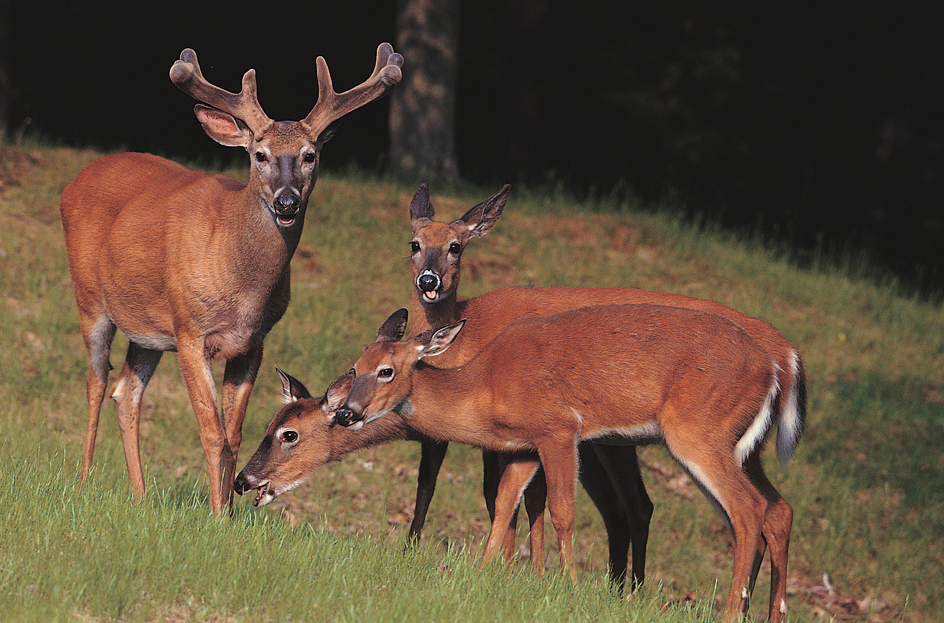White-tailed deer, also called Virginia deer, is the most common large game animal of North America. The deer is named for the white fur on the underside of its tail, often seen as the startled animal bounds off into the brush. The white-tailed deer is a familiar sight in areas where suburban homes and farms have intruded upon its habitat. The deer is popular with hunters for sport as well as meat.

The white-tailed deer reaches about 100 to 300 pounds (45 to 140 kilograms), with bucks (males) larger than does (females). The deer stands about 30 to 40 inches (75 to 100 centimeters) tall at the shoulder. It ranges in length from about 60 to 80 inches (150 to 200 centimeters).
Loading the player...White-tailed deer
The deer’s coat changes color throughout the year. It ranges from tan to reddish-brown in the summer and from grayish-brown to gray in the winter. The deer has white fur around the eyes and nose; along the chin, throat, and belly; inside the legs; and beneath the tail. The deer’s feet end in cloven hooves. Bucks grow antlers in the spring and shed them in the winter.
The white-tailed deer lives throughout southern Canada and the continental United States, except for the Southwest. Its range extends through Central America and into South America. The deer thrives in wooded or brushy areas, which provide plenty of food and places to hide.
The white-tailed deer is a relatively shy animal. It has good eyesight, acute hearing, and a highly developed sense of smell, all of which it uses to detect and avoid predators. A fleeing white-tailed deer can run as fast as 40 miles (64 kilometers) per hour and can leap 15 to 20 feet (4.6 to 6.1 meters) forward. White-tailed deer are also excellent swimmers.
Does typically live in family groups of a mother and one or more fawns (young). Bucks may live alone or in small groups, which break up during the mating season. White-tailed deer communicate with one another using scent glands on the feet and legs. They may also communicate using such vocalizations as bleats, grunts, snorts, and wheezes.
The white-tailed deer feeds around dawn and dusk. It typically forages a home range of less than 1 square mile (3 square kilometers). It eats a variety of plant foods, which may include green plants and leaves in the spring and summer, acorns and other nuts in fall, and the buds and twigs of woody plants in winter. The white-tailed deer is a ruminant (cud-chewing animal), with a four-chambered stomach for digesting tough plant fibers.
White-tailed deer mate in the fall to winter. Around 6 ½ months later, the doe gives birth to 1 to 3 fawns. Fawns are reddish-brown dappled with white spots. This coloration provides excellent camouflage in dense brush, where the mother may leave the fawns for hours at a time to forage. The fawns can walk at birth and begin to nibble plants in a few days. They are weaned at about 8 to 10 weeks. Bucks leave their mother at around one year of age. Does may stay for two years. White-tailed deer can live for 20 years in captivity. In the wild, most live for only a few years.
Animals that prey on white-tailed deer include gray wolves , mountain lions , and bears . In areas where large predators are scarce, white-tailed deer may become overpopulated. Overpopulation can lead to disease, starvation, and damage to plant life. Sport hunting can help to keep deer numbers in check. White-tailed deer can damage farm crops, vegetable gardens, and ornamental plants by feeding on them. White-tailed deer also frequently come into contact with automobiles while crossing roadways, causing serious accidents.
